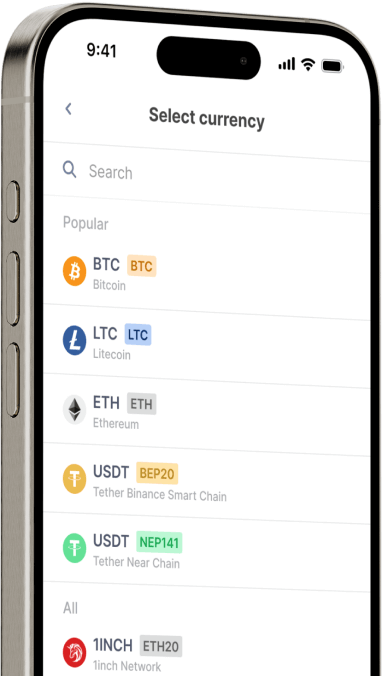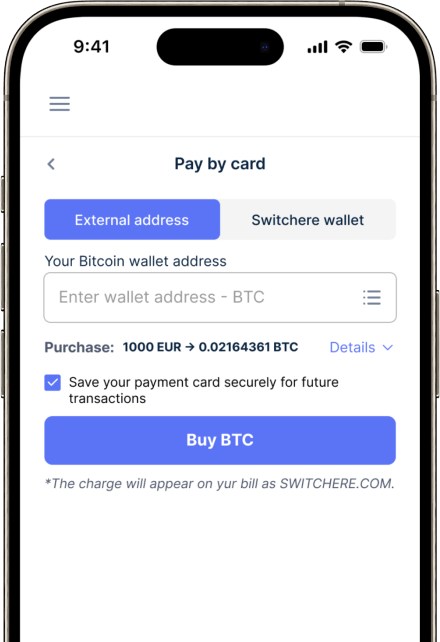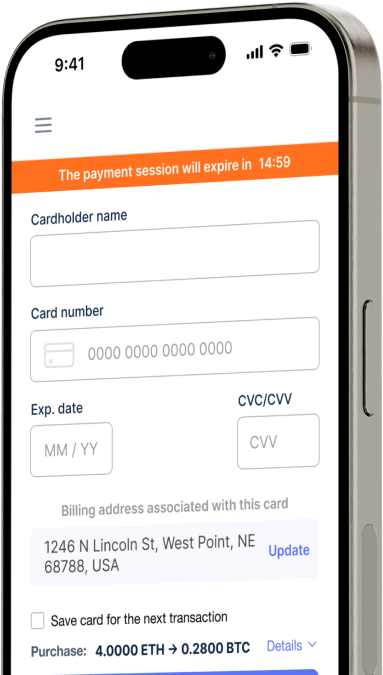Convert
Tunisian dinar (TND) to Conflux EVM (CFX) Instantly
Purchase Conflux EVM (CFX) with Tunisian dinar (TND) easily at Switchere and benefit from fast, secure transactions.
About
Conflux EVM (CFX)
Conflux (CFX) is a high-performance Layer 1 blockchain designed to overcome the blockchain trilemma of achieving scalability, security, and decentralization simultaneously. It operates as a permissionless, public blockchain infrastructure engineered for building high-throughput decentralized applications (dApps), particularly in DeFi, Web3, and the metaverse. Its core innovation is the unique Tree-Graph consensus algorithm, a novel ledger structure that processes blocks in parallel rather than in a linear chain. This parallel processing capability allows for significantly higher transaction throughput and lower confirmation times compared to traditional blockchain architectures, providing a robust foundation for scalable digital assets and applications.
The network is secured by a hybrid Proof-of-Work (PoW) and Proof-of-Stake (PoS) consensus mechanism, combining the proven security of PoW with the energy efficiency and governance benefits of PoS. A key feature is its full EVM compatibility, creating a seamless environment for developers to migrate Ethereum-based smart contracts and dApps. The native utility token, CFX, is integral to the ecosystem. It is used for paying transaction gas fees, participating in network governance through on-chain voting, and for staking to earn rewards, which contributes to the cryptographic security of the entire decentralized network.
Buy Other 150+ Cryptocurrencies for Tunisian dinar (TND)
Other Coins for Tunisian dinar (TND)
-
TND to ZRX
-
TND to 1INCH
-
TND to AAVE
-
TND to ACH
-
TND to ALGO
-
TND to TLM
-
TND to ANKR
-
TND to APE
-
TND to NFT
-
TND to API3
-
TND to APT
-
TND to ARPA
-
TND to AUDIO
-
TND to AVAX
-
TND to AVAX
-
TND to AXS
-
TND to BADGER
-
TND to BAL
-
TND to BNT
-
TND to BAT
-
TND to BNB
-
TND to BSW
-
TND to BSV
-
TND to BLUR
-
TND to BONE
-
TND to CTSI
-
TND to CELR
-
TND to CELO
-
TND to CEL
-
TND to LINK
-
TND to CHZ
-
TND to CHR
-
TND to C98
-
TND to COMP
-
TND to CFX
-
TND to PEOPLE
-
TND to CVX
-
TND to ATOM
-
TND to CTC
-
TND to CRV
-
TND to DAI
-
TND to DASH
-
TND to MANA
-
TND to DENT
-
TND to DGB
-
TND to DYDX
-
TND to XEC
-
TND to EOS
-
TND to ETC
-
TND to ENS
-
TND to ETHW
-
TND to FET
-
TND to FIL
-
TND to FLOKI
-
TND to GALA
-
TND to GNO
-
TND to ONE
-
TND to HBAR
-
TND to HOT
-
TND to HOOK
-
TND to ICX
-
TND to ILV
-
TND to IMX
-
TND to INJ
-
TND to ICP
-
TND to IOST
-
TND to IOTX
-
TND to JASMY
-
TND to JST
-
TND to KAVA
-
TND to KCS
-
TND to KSM
-
TND to KNC
-
TND to LDO
-
TND to LQTY
-
TND to LPT
-
TND to LOOKS
-
TND to LRC
-
TND to LUNA
-
TND to MKR
-
TND to MASK
-
TND to EGLD
-
TND to ALICE
-
TND to NEAR
-
TND to XEM
-
TND to NEXO
-
TND to NOT
-
TND to NMR
-
TND to OKB
-
TND to OMG
-
TND to ONT
-
TND to EDU
-
TND to OP
-
TND to OGN
-
TND to CAKE
-
TND to PAXG
-
TND to PENDLE
-
TND to DOT
-
TND to POL
-
TND to QTUM
-
TND to QNT
-
TND to RDNT
-
TND to XRD
-
TND to RVN
-
TND to REN
-
TND to RSR
-
TND to RLC
-
TND to RPL
-
TND to SFP
-
TND to SHIB
-
TND to SKL
-
TND to SXP
-
TND to STND
-
TND to STG
-
TND to XLM
-
TND to GMT
-
TND to STORJ
-
TND to STMX
-
TND to SUSHI
-
TND to SNX
-
TND to USDT (Polygon)
-
TND to USDT (AVAC)
-
TND to USDT (BEP20)
-
TND to USDT (ERC20)
-
TND to USDT (SPL)
-
TND to USDT (NEP141)
-
TND to USDT (FA2)
-
TND to USDT (TRC20)
-
TND to USDT (JETTON)
-
TND to XTZ
-
TND to GRT
-
TND to SAND
-
TND to TFUEL
-
TND to THETA
-
TND to RUNE
-
TND to TON
-
TND to TUSD (BEP20)
-
TND to TUSD (TRC20)
-
TND to TWT
-
TND to UOS
-
TND to UMA
-
TND to UNI
-
TND to USDC (Polygon)
-
TND to USDC (SPL)
-
TND to USDC (OP)
-
TND to USDC (BEP20)
-
TND to USDC (AVAC)
-
TND to USDC (ARB)
-
TND to USDC (ERC20)
-
TND to VET
-
TND to VRA
-
TND to WAXP
-
TND to WOO
-
TND to WLD
-
TND to WBTC
-
TND to WMINIMA
-
TND to XDC
-
TND to YFI
-
TND to YGG
-
TND to ZIL
How to Buy Conflux EVM (CFX)
Frequently Asked Questions
-
What are the common methods for buying Conflux (CFX) with Tunisian Dinar (TND)?
Purchasing Conflux (CFX) with Tunisian Dinar (TND) typically involves using a Peer-to-Peer (P2P) platform or a regional cryptocurrency exchange that supports TND deposits. Direct TND/CFX trading pairs are rare, so a common route is to buy a stablecoin like USDT with TND via local bank transfer, and then trade that stablecoin for CFX on a larger exchange. All reputable platforms will require KYC/AML compliance for such fiat on-ramp transactions.
-
Are there specific risks associated with TND to CFX blockchain transactions?
The primary risks relate to the fiat on-ramp process rather than the Conflux blockchain itself. Using TND may involve exchanges with lower liquidity, leading to potential price slippage. Regulatory uncertainty in Tunisia regarding digital assets could also pose a risk. When using P2P markets, there's a risk of counterparty fraud, which can be mitigated by using platforms with escrow services. Once the CFX is on the Conflux network, the transaction risks are standard for any blockchain, such as ensuring the recipient wallet address is correct.
-
How can I transfer assets from other blockchains to Conflux after a TND purchase?
Conflux offers a cross-chain bridge called ShuttleFlow. After you have acquired CFX or another digital asset, you can use ShuttleFlow to bridge assets to and from other major blockchains like Ethereum, BNB Chain, and Bitcoin. This enables interoperability, allowing you to move liquidity and interact with dApps across different ecosystems. Always verify the official ShuttleFlow bridge address and be cautious of phishing sites when performing a cross-chain transaction.
-
What is the key technological advantage of the Conflux network I should know before buying CFX?
The primary technological advantage of Conflux is its unique Tree-Graph ledger structure combined with a hybrid Proof-of-Work (PoW) and Proof-of-Stake (PoS) consensus mechanism. This architecture allows for parallel processing of blocks, resulting in significantly higher throughput and lower transaction latency compared to traditional blockchains. Importantly, its Conflux-VM is fully EVM-compatible, meaning decentralized applications (dApps) from Ethereum can be easily migrated, offering a scalable environment for developers.
-
After acquiring CFX, can I stake it to participate in the hybrid PoW/PoS consensus?
Yes, CFX holders can participate in the network's security and governance through its Proof-of-Stake (PoS) mechanism. By staking your CFX tokens in a digital wallet that supports this function, you can earn rewards. This is a core feature of Conflux's hybrid consensus model, where the PoS chain finalizes transactions confirmed by the PoW-based Tree-Graph structure, enhancing security and decentralization. Always use official or reputable staking pools to secure your digital assets.
-
What type of digital wallet is recommended for securely storing CFX after purchase?
For long-term and secure storage of your CFX digital asset, a non-custodial wallet is highly recommended. This can be a hardware wallet (like Ledger or Trezor) for maximum security, or a software wallet like the official ConfluxPortal. Unlike leaving your assets on a cryptocurrency exchange (a custodial wallet), a non-custodial wallet gives you full control over your private keys, ensuring that you are the sole owner of your funds on the blockchain.




